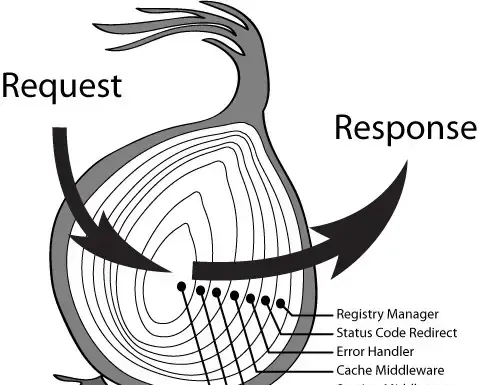每日知識分享~
前言
大家好,我是林三心,用最通俗易懂的話講最難的知識點是我的座右銘,基礎是進階的前提是我的初心~
洋蔥模型
洋蔥模型是什麽呢?作用是什麽呢?
先說說他的作用吧,他的作用是為了對一個請求的整個生命周期做一個統一的管理,一個請求的生命周期包括請求、響應。由於實作方式像一層一層剝開洋蔥,所以叫洋蔥模型~

舉例子
可能很多人會覺得一臉懵逼?不知道我在表述什麽?那我透過兩個例子來說明,大家可能就比較清晰了~
Axios 攔截器
相信很多人在計畫中都用過 Axios 的攔截器
請求攔截器
響應攔截器
axiosInstance
.interceptors
.request.use((config) => {
console.log(config) // {}
config.name = 'sunshine_lin'
}
axiosInstance
.interceptors
.response.use((res) => {
console.log(res.config)
// { name: 'sunshine_lin' }
}
在每次請求中,請求攔截器和響應攔截器中,獲取到的config是相通的,也就是同一個物件。
我們甚至可以多個攔截器
// 請求攔截器1
axiosInstance
.interceptors
.request.use((config) => {
console.log(config) // {}
config.name = 'sunshine_lin'
return config
}
// 請求攔截器2
axiosInstance
.interceptors
.request.use((config) => {
console.log(config)
// { name: 'sunshine_lin' }
config.age = 20
return config
}
// 響應攔截器1
axiosInstance
.interceptors
.response.use((res) => {
console.log(res.config)
// { name: 'sunshine_lin',
// age: 20
// }
res.data = 1
return res
}
// 響應攔截器2
axiosInstance
.interceptors
.response.use((res) => {
console.log(res.data) // 1
return res
}
其實基礎比較好的同學,可以想象出他的實作原理基本(虛擬碼)就是:
// 虛擬碼
// 收集
const tasks = []
const use = (fn) => {
tasks.push(fn)
}
// 執行
const config = {}
tasks.forEach(fn => {
config = fn(config)
})
Koa
Koa 是一個 Nodejs 的框架,他也有洋蔥模型的實踐,比如:
const koa = new Koa()
koa.use(async (ctx, next) => {
console.log(1)
console.log(ctx) // {}
await next()
console.log(ctx)
// { name: 'sunshine_lin', age: '20' }
console.log(2)
})
koa.use(async (ctx, next) => {
console.log(3)
ctx.name = 'sunshine_lin'
await next()
console.log(4)
})
koa.use(async (ctx, next) => {
console.log(5)
ctx.age = '20'
})
koa.listen(3000)
執行的結果為:

就感覺是,遇到 next 就一層一層往兩邊掰開。

簡單實作洋蔥模型
functionaction(instance, ctx) {
// 記錄索引
let index = 1
functionnext() {
// 記錄執行的中介軟體函式
const nextMiddleware = instance.middlewares[index]
if (nextMiddleware) {
index++
nextMiddleware(ctx, next)
}
}
// 從第一個開始執行
instance.middlewares[0](ctx, next)
}
classKoa{
middlewares = []
use(fn) {
this.middlewares.push(fn)
}
listen(port) {
Promise.resolve({}).then((ctx) => {
action(this, ctx)
})
}
}
結語
我是林三心
一個待過 小型toG型外包公司、大型外包公司、小公司、潛力型創業公司、大公司 的作死型前端選手;
一個偏前端的全幹工程師;
一個不正經的金塊作者;
逗比的B站up主;
不帥的小紅書博主;
喜歡打鐵的籃球菜鳥;
喜歡歷史的乏味少年;
喜歡rap的五音不全弱雞
如果你想一起學習前端,一起摸魚,一起研究簡歷最佳化,一起研究面試進步,一起交流歷史音樂籃球rap,可以來俺的摸魚學習群哈哈,點這個,有7000多名前端小夥伴在等著一起學習哦 -->











